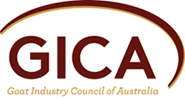Goat producers are encouraged to familiarise themselves with the new requirements under NLIS (Sheep and Goats).
From 1 July 2010, all states will be progressively introducing the requirement to record the movement of mobs of goats between properties on the NLIS database.
Under NLIS producers are already required to know where the goats under their management have come from and where they are going when they leave their property.
This involves:
- Approved NLIS ear tags for goats to show where they have come from;
- and accurate transportation documentation, generally a Livestock Production Assurance National Vendor Declaration and Waybill (LPA NVD/Waybill), to show where they are going.
This system is now being reinforced through the centralised recording of movement information on the NLIS database. Mob-based movement recording requires the movement of all goats from one property to another with a different Property Identification Code (PIC) to be recorded on the NLIS database.
To record mob-based movements, the person responsible for the goats at the property the animals are being moved to, defined by a PIC, needs to access their existing NLIS database account or establish an account via the internet. These accounts can be set up for each PIC, are free and are the same as those used for cattle and sheep – www.nlis.mla.com.au
The following information is then recorded:
- The PIC the goats came from
- The PIC the goats were moved to
- The date of the movement
- The number of livestock
- The LPA NVD/Waybill number
- PICs from original ear tags for any non-vendor bred goats
Goats do not have to be individually scanned as is the case for cattle.
Margaret Piccoli, the Goat Industry Council of Australia’s representative to the National NLIS (Sheep and Goats) Committee, reinforced the importance of NLIS saying that it really is a matter of no tag, no sale. Ms Piccoli went on to say: “Producers are required by law to know where the goats under their management come from and where they are going and mob-based movement recording, together with NLIS tagging and transportation documentation, allow producers to satisfy this requirement.”
“Goat prices are currently at historically high levels and for producers to take advantage of these favourable market conditions they must be sure that they comply with NLIS tagging requirements and mob-based movement recording.”
Ms Piccoli also added: “Many dairy goat producers also run goats for meat or fibre production and these goats are not covered by the NLIS ear tagging exemptions for dairy goats. It is therefore important that all goat producers understand their obligations under the new NLIS mob-based movement recording requirements.”
A series of fact sheets have been developed outlining the new mob-based movement recording requirements state-by-state.
Visit www.mla.com.au/NLISSheepAndGoats to access these fact sheets or contact your local state department of primary industries.
